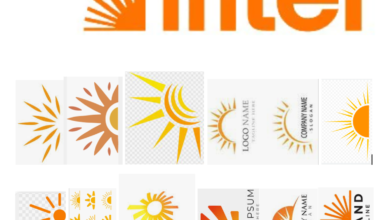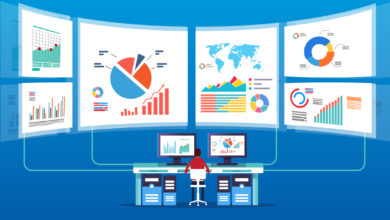[ad_1]
As a CMO, you’re the company’s chief storyteller, and you’re constantly looking for new ways to answer this question:
What can I do to grab their attention?
Marketing has gone digital in the last decade, leaving CMOs responsible for creating more and more quality content to achieve their goals. Your target is the group of people you hope to reach with your marketing. Your goal is to break through the noise—to catch the attention of prospects and convert as many of them as possible into customers.
To achieve that goal, you spend your days asking questions that sound like these:
- Have I given my people everything they need to be successful?
- Are we hitting our KPIs?
- Are people aware of our brand?
- Could I get more out of my budget?
- How can I get the best out of my team?
You’re not against spending money—as long as it gets you the results you’re looking for. But you also avoid anything that sounds like it will be a waste.
What can a digital asset management (DAM) system do for you as a CMO? As it turns out, more than you might think.
5 Ways a DAM Helps You Meet Your Goals as a CMO
A digital asset management system provides a single repository that can help you understand what’s been produced, what’s working, what’s not working, and what you should do more of.
It’s a tool that touches a myriad of problems and will be used by departments throughout your organization.
Your creative team will use it to store and distribute assets. But your sales, marketing, HR, and development teams might also use the DAM on a regular basis—same with your corporate partners, agencies, or distributors. According to PWC, 77% of high performing projects use some form of asset or project management software
A DAM empowers you to create a single, consistent story for your brand—no matter who in your organization is tapping into it.
Here are five ways it does just that.
1. DAM as a Productivity Tool

The question: “Have I given my people everything they need to be successful?”
Most CMOs are constantly being approached by salespeople trying to push their product or service.
You reject most new tools—for a variety of reasons:
- It seems like they will be difficult to learn and use.
- You’ll have to learn a new process and you’re already crazy busy.
- Getting your team to change how they work isn’t easy.
- There’s nothing wrong with your current toolset.
- You don’t believe they will help you produce better results.
In short, you don’t think they’ll be worth it.
If you’ve thought those questions about a DAM, here are two simple questions to ask to see if using one could be a productivity booster for your team:
1. How often do we receive email or chat messages from people looking for images or files? How much time does that cost us?
In many marketing teams, receiving requests for images and files is an everyday occurrence.
It’s also often a productivity drain you might not even know was happening. Who on your team receives requests like these and responds to them? Find out how often they get those requests and how much time they spend responding.
A DAM could easily replace those lost hours by providing everyone in your organization, as well as external stakeholders, with a single location for images and files.
This can slash the number of requests by 90% or more.
2. Have we ever wasted time recreating files or images we couldn’t find or didn’t know we already had?
This is a surprisingly common issue in the creative and marketing teams we work with.
One CMO we worked with told us he had unknowingly paid for several expensive product-related photo shoots—only to realize later that he already had art on file for them.
After implementing a DAM, “We no longer have that issue,” he told us.
The impact of artificial intelligence on productivity
Most storage solutions are folder-based, but Brandfolder’s DAM is a fundamentally different type of tool.
Instead of folders, Brandfolder’s system uses AI-powered tagging engine called Brand Intelligence to make it much easier to stay organized and find files when you need them.
Working behind the scenes, Brand Intelligence takes on the tedious work of consistently tagging and smartly organizing your assets, so you can work on complex projects that actually matter to your bottom line.
For end users, Brand Intelligence’s tagging system makes finding an asset as simple as searching for an image in Google. Just enter a keyword and scan through the most relevant results.
On both sides of the process—creation and retrieval—AI improves productivity for everyone by making it much easier to organize and and find the assets created by your team.
2. DAM for KPIs

The question: Are we hitting our KPIs?
What key performance indicators are you tracking right now? For many CMOs, the numbers are a mix of:
- Leads
- Sales
- Revenue
- Website traffic
- Social media followers
What if you could add impact or utilization to the list of statistics you review every month?
In other words, what if you could measure the impact your marketing team has on the rest of the organization—or beyond?
A DAM is not just a storage place for digital assets. It’s also an analytics engine that tracks the use of those assets.
Trying to get your sales team to use the assets you’ve provided for them? A DAM lets you see who’s accessing your files—and who isn’t.
You can use this information to drive the adoption of your materials by your sales team or by anyone else in your organization who regularly uses marketing collateral.
These statistics will also show you what files are being used and which ones are being ignored.
From that data, you can make business decisions about what assets you should stop creating and which ones you should create more of.
In addition, these metrics aren’t limited to internal teams.
It could also be outside partners—agencies, PR firms, freelancers, corporate partners, retail distributors. Anyone you work with who might need a file—a DAM will reveal who’s using what, and when.
3. DAM for Brand Awareness
The question: Are people aware of our brand?
A DAM is not just a tool for internal employees. It’s also a resource that helps you drive brand awareness.
For example, swimwear company FINIS uses a public-facing Brandfolder to provide digital files of all its products to advertisers and retail partners that sell its products.
If a retail partner wants to feature a FINIS product on its website or in an ad, it can do so without asking anyone at FINIS for images.
Instead, anyone who needs images can simply access the Brandfolder file locations, find the product, and download the files—all on their own. It’s a bit like using the self-service checkout machine at the store—when there’s no line and you only have a few specific items.

It’s fast, efficient, and it gives you access to exactly what you need without needing to wait for someone else to help you.
It also helps your partners find exactly what they need, preventing lost opportunities that sometimes happen when retailers find it easier to create promotions and sales events for your competitors.
By simply making it easy for people to find images, FINIS increases its exposure and helps create an excellent working relationship with its partners.
Other product companies use a DAM to provide specific collections of digital assets for each of the channels they—delivering uniquely created assets to each retail channel they work. Everlast Worldwide is a great example.
This provides a personal touch for their retailers, creating additional value for both sides of the partnership.
4. DAM and Your Budget

The question: “Could I get more out of my budget?”
Would you say “yes” to a 10-hour project that would save your team 1,000 hours of work over the next five years?
Or would you jump at an opportunity to eliminate a few thousand dollars of rework costs?
To be clear, we don’t know your specific business model or how many hours you could save from implementing a DAM.
We do know—however—that the best companies we work with weren’t thinking of a DAM as one more software tool they provided for their teams. They were thinking bigger.
They implemented a DAM as part of a much larger push to work smarter—not harder—in marketing and creative. Their goals often included:
- Reducing waste
- Eliminating busywork
- Increasing utilization of their marketing assets
- Raising awareness of their brand
- Strengthening relationships with strategic partners
- Better serving their clients—both internal and external.
A DAM is a force multiplier for these companies—a strategic asset that improves results and eliminates countless hours of manual work in the months after implementation.
While each situation is different, the companies we work with consistently report quantifiable savings in areas such as:
- Hours saved
- Efficiency gains
- Content distribution savings
- Campaign activity savings
- Improved customer experiences
- Annual savings from retiring legacy solutions
- Rebrand benefits
- Lower legal expenses from improper asset usage
- Hours and money saved by reducing rework.
They also report qualitative improvements across:
- Brand consistency
- Brand awareness
- Customizable content options
- Productivity in marketing, creative, and other departments that depend on creative assets.
In all these ways, a DAM empowers you to get more from the dollars you’re investing today—both from your employees and from the other tools you already use.
5. DAM for Hiring & Recruiting

The question: “How can I get the best out of my team?”
Finally, could a DAM help you motivate your team to do their best work? In study after study, employee motivation accounts for a remarkably large percentage of performance.
Motivation—the willingness to get the job done by starting rather than procrastinating, persisting in the face of distractions, and investing enough mental effort to succeed—accounts for 40% of the success of team projects. – Richard E. Clark and Bror Saxberg, Harvard Business Review
And yet, in a Robert Half survey, only 47% of workers were able to make the connection between their work and the impact it had on the company’s financial performance.
This is a consistent problem for many front-line marketers—who often have little to no visibility into the impact of their work.
Duo Security, for example, saw a boost in morale and satisfaction across its company after implementing Brandfolder.
Usage metrics gave them a window into what was working. They dramatically reduced the number of requests for simple requests like resizing or cropping, saving 10 hours a week just for the creative team.
In your organization, is it clear to everyone on your team what happens to their work after they’re done with it?
Do they understand who uses their work, or how it benefits them? Do they know if their efforts are making a positive impact on the company’s bottom line?
For an example of what motivation looks like when done well, here’s what one art director had to say in an unsolicited Capterra review about the impact a DAM had on her team.
Brandfolder has been great for collaboration. It’s a great way to share content and resources with our partners and team members in one central location. It’s made things very accessible and organized and help makes our teams more self sufficient which in return saves time and makes us more efficient overall. – Caitlin P., Regional Marketng Specialist at a telecommunications company with more than 10,000 employees
Organizations like hers can clearly trace the impact of their work on the goals of the larger organization.
When that happens, you’re much better positioned to attract and retain talent over time. You’ll also enjoy the benefits of having a more motivated, productive team.
The Bottom Line: A DAM Is a Strategic Asset for CMOs
A DAM is a tool that powers a larger effort to improve how work gets done in your organization.
It can also help you achieve your No. 1 goal: Breaking through to the people you want to reach with your marketing.
It works by helping you:
- Ensure your people work smarter—not harder
- Monitor effectiveness (not just productivity) as a KPI
- Drive brand awareness
- Get the most out of your budget
- Get the best out of your team.
A DAM is much more than a cloud-based storage device.
When implemented as a strategic asset, a DAM drives efficiency, reduces waste, lowers expenses, increases adoption, and creates profits.
When viewed as such, it’s a powerful tool for CMOs trying to hit their KPIs and get things done.
Source link






